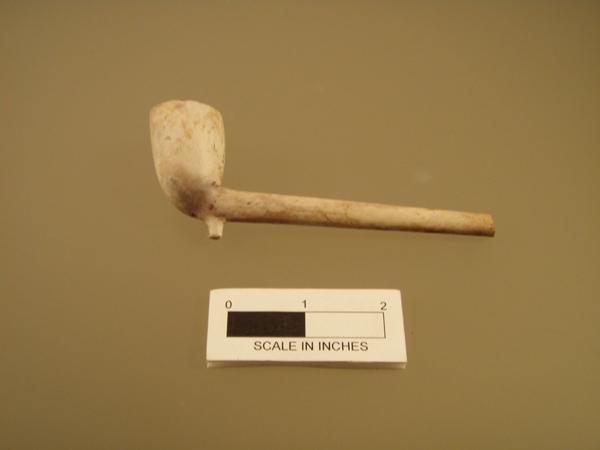Clay tobacco pipes were first manufactured in England in the late 1500s and by 1847 they were being made in the United States by Thomas Smith of New York. They continued to increase in popularity until World War I when cigarettes became the preferred method of smoking tobacco. These simple clay pipes were known as \"penny pipes\" because they were inexpensive and readily disposable when they were chipped or broken. Pipe makers regularly marked their pipes on either the bowl or stem of the pipe to identify themselves. These pipes include a sample from C. Crop of London, who began making pipes in the 1840s. His sons took over the business in the 1870s and continued manufacturing clay pipes until 1924. The maker of a second pipe, with two molded upside-down U\'s on the bowl, is unknown. A third sample has a repeating fluted design around the bowl. They were recovered from the backyards of 38 and 40 Natoma Street, as well as within the former Risdon Iron Works.

Archaeology Album